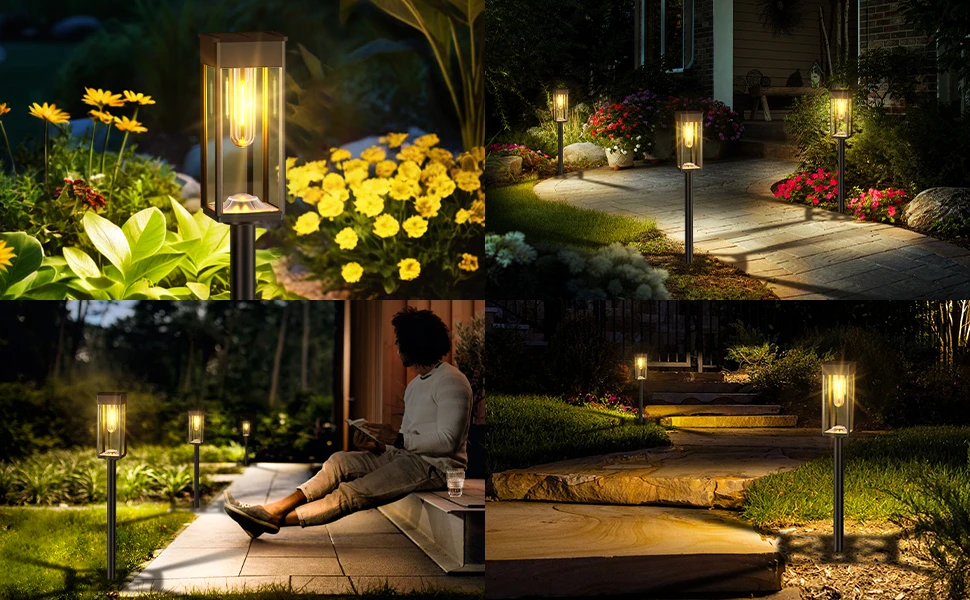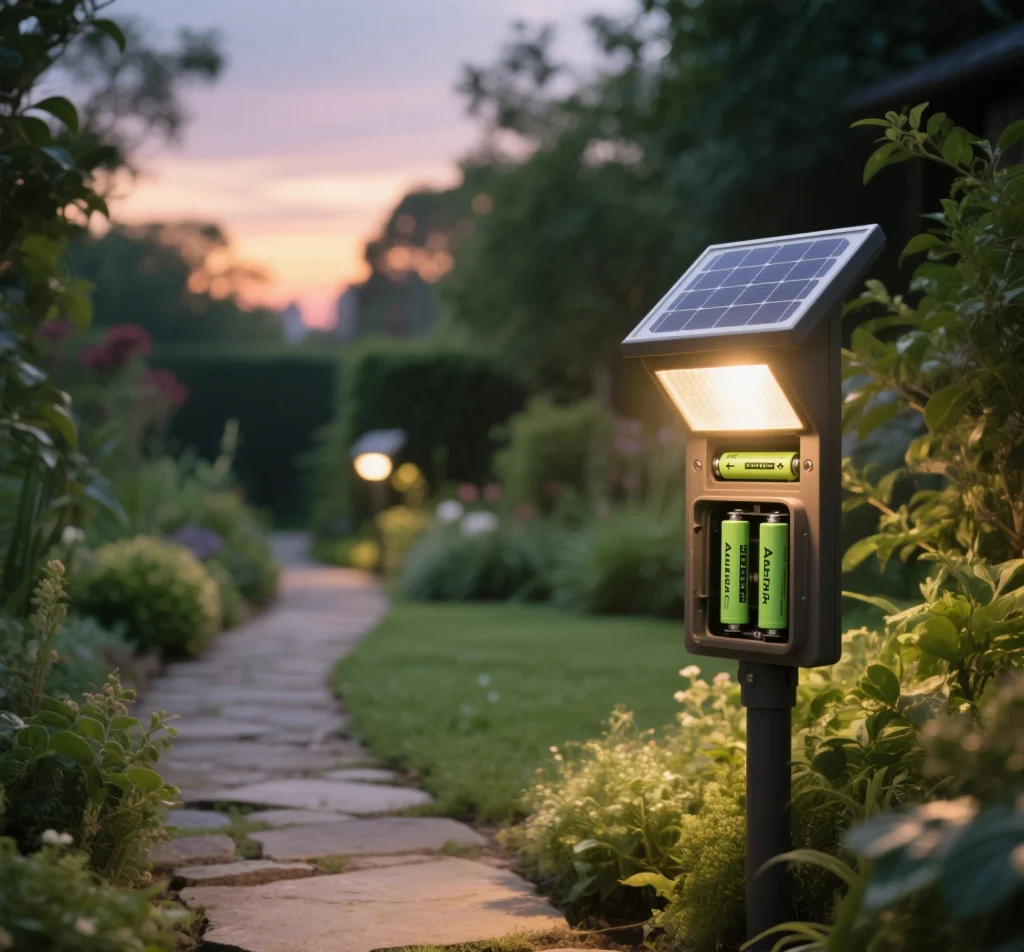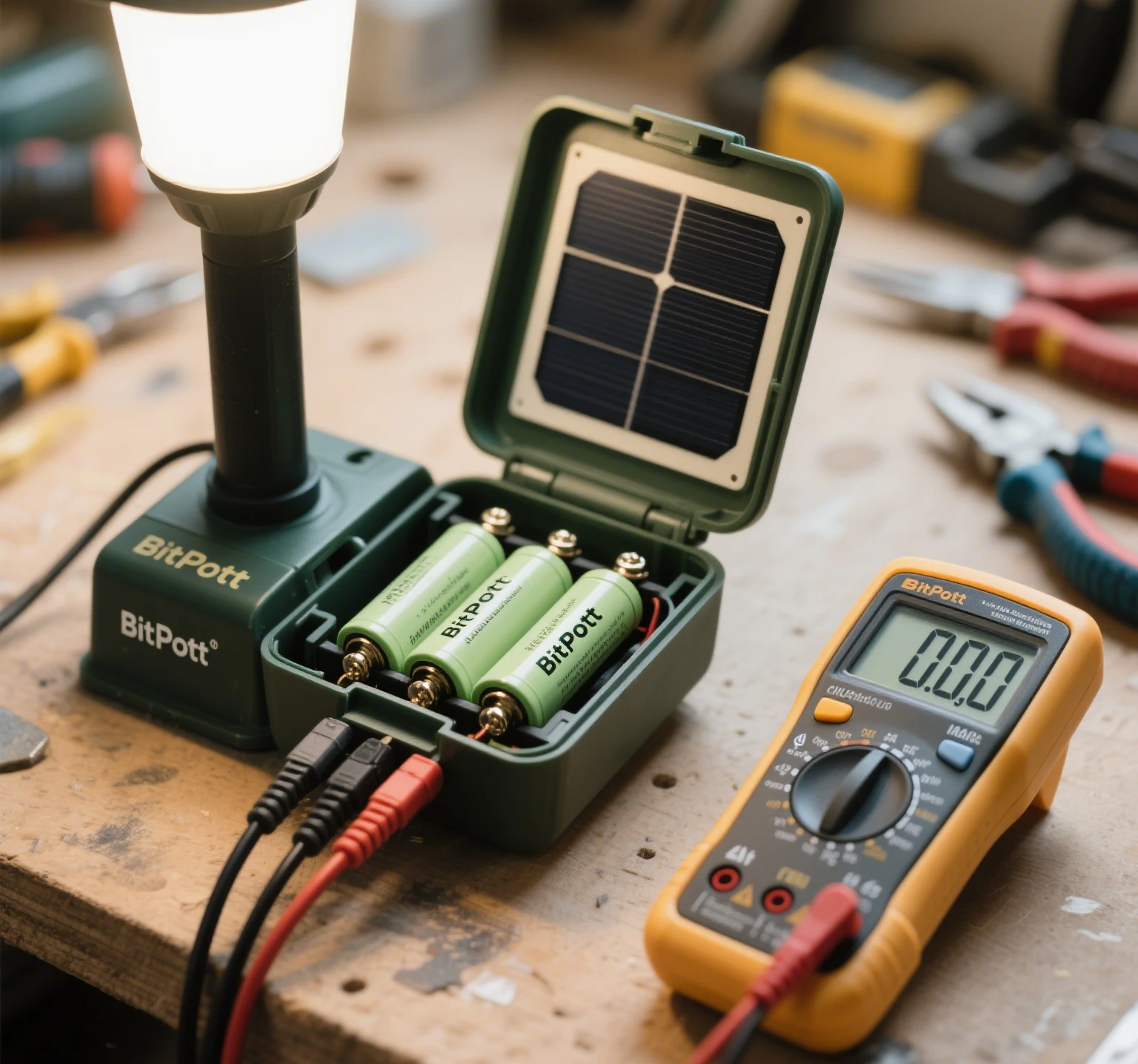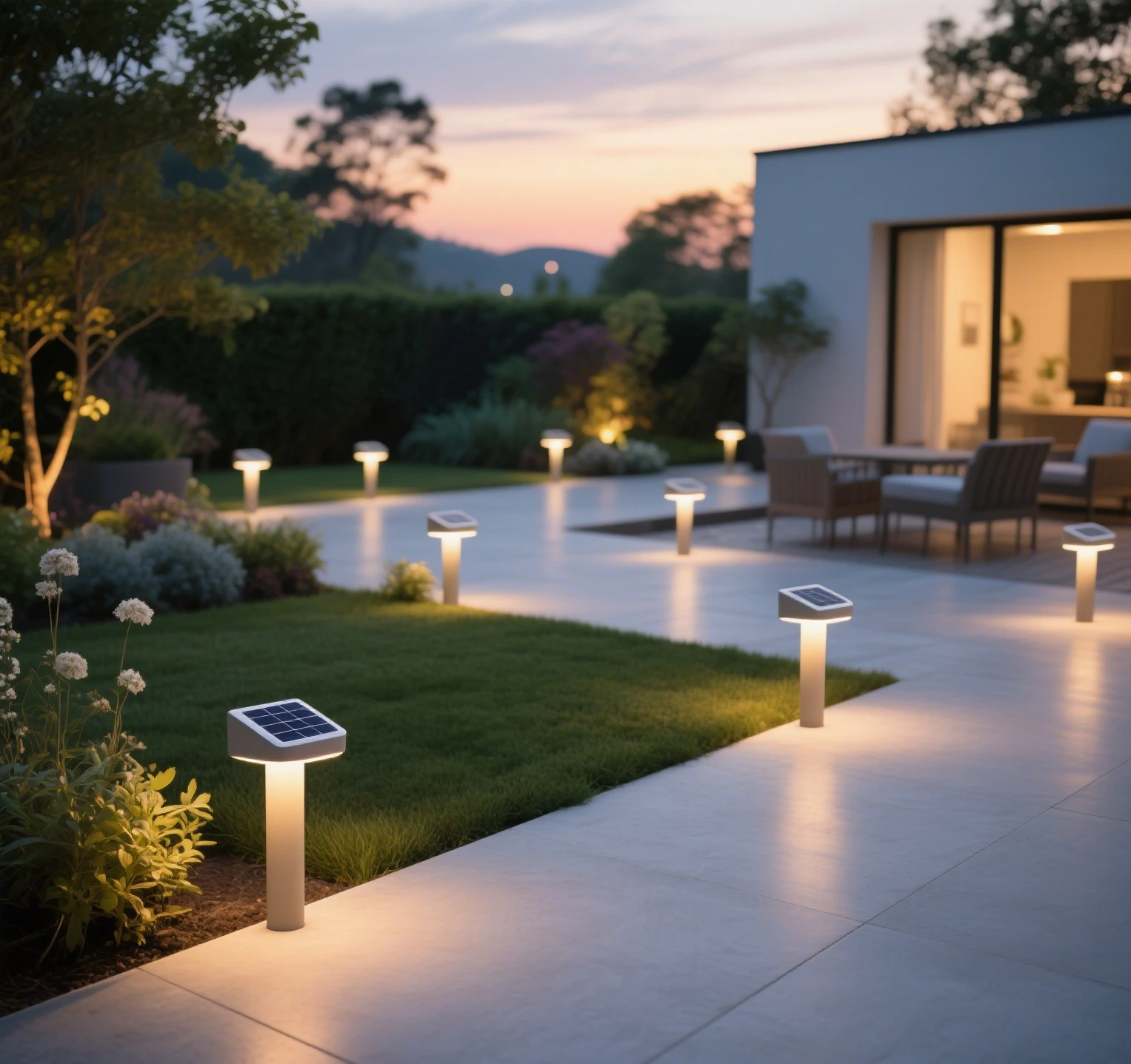Solar lights are a sustainable and cost-effective way to illuminate gardens, pathways, and outdoor spaces. At the core of their performance lies the rechargeable battery for solar lights, which stores energy from the sun to power the lights at night. Choosing the right battery involves understanding battery types for solar lights, battery capacity for solar lights, voltage compatibility, and how they align with your specific solar light model. This guide provides a comprehensive overview of selecting the ideal battery, including key considerations and common mistakes to avoid during solar light battery replacement, ensuring your outdoor solar lights shine brightly for years.

Why the Right Battery Matters
The battery directly impacts the runtime, brightness, and longevity of your solar powered lights. A mismatched or low-quality battery can lead to dim illumination, short battery life, or even damage to the light’s circuitry. By selecting a battery with the right mAh rating for solar lights, voltage, and type, you can optimize solar light performance and reduce the need for frequent replacements. Factors like battery lifespan, charge cycles for solar batteries, and environmental resilience also play a critical role in maintaining eco-friendly solar light batteries.
Key Factors for Choosing a Solar Light Battery
1. Battery Types for Solar Lights
Different battery types for solar lights offer unique advantages and limitations. The most common options include:
- NiMH Batteries for Solar Lights: Nickel-Metal Hydride (NiMH) batteries are the standard for most outdoor solar lights due to their eco-friendliness and resistance to memory effect. With a typical voltage of 1.2V, they’re compatible with AA and AAA solar lights. NiMH batteries offer 500–2000 charge cycles and perform well in moderate climates.
- Pros: Affordable, widely available, environmentally friendly.
- Cons: Limited performance in extreme cold, moderate self-discharge rate.
- LiFePO4 Batteries for Solar Lights: Lithium Iron Phosphate (LiFePO4) batteries are increasingly popular in modern solar lights, offering a higher voltage (3.2V) and exceptional battery lifespan (up to 2000 charge cycles). They excel in weather-resistant solar batteries, with thermal stability in extreme temperatures.
- Pros: Long lifespan, safe, high thermal stability.
- Cons: Higher cost, limited compatibility with older solar lights.
- Li-ion Batteries for Solar Lights: Lithium-ion batteries (3.7V) provide high energy density and are used in some premium solar powered lights. They offer 500–1000 charge cycles but require specific charging systems.
- Pros: High capacity, lightweight.
- Cons: Higher cost, sensitive to overcharging.
- NiCd Batteries: Nickel-Cadmium batteries were once common but are now largely phased out due to cadmium’s environmental impact. They’re less efficient and prone to memory effect.
- Cons: Toxic, outdated, avoid unless required by older models.
Recommendation: Choose NiMH batteries for solar lights for most standard applications due to their balance of cost and performance. Opt for LiFePO4 batteries for solar lights if your model supports 3.2V and you prioritize durability in harsh climates.
2. Battery Capacity for Solar Lights (mAh)
The mAh rating for solar lights measures the battery’s energy storage capacity, directly affecting how long your lights stay on. Common capacities range from 600 mAh to 2800 mAh:
- Low Capacity (600–1000 mAh): Suitable for small decorative lights that need 4–6 hours of runtime.
- Medium Capacity (1000–2000 mAh): Ideal for pathway or garden lights requiring 8–10 hours of illumination.
- High Capacity (2000–2800 mAh): Best for high-power outdoor solar lights, such as floodlights or security lights, needing 10–12 hours of runtime.
Tip: Always match the battery capacity for solar lights to the light’s requirements. Overloading with a higher mAh battery can strain the solar panel, while a lower capacity may result in insufficient runtime.

3. Voltage Compatibility
The voltage for solar light batteries must match the light’s specifications to avoid damage. Common voltages include:
- 1.2V: Standard for NiMH batteries for solar lights and most AA/AAA solar lights.
- 3.2V: Used in LiFePO4 batteries for solar lights, common in newer models.
- 3.7V: Found in Li-ion batteries for solar lights, typically in premium or specialized lights.
Using a battery with the wrong voltage compatibility can lead to overcharging, undercharging, or circuit damage. Check your light’s manual or battery compartment for voltage requirements before purchasing.
4. Compatibility with Solar Light Models
Not all batteries fit every solar light. Consider:
- Physical Size: Most solar lights use AA or AAA batteries, but some require custom sizes or button-cell batteries. Measure the battery compartment to ensure a proper fit.
- Battery Chemistry: Ensure the solar panel and charging circuit support the battery type (e.g., NiMH vs. LiFePO4).
- Brand Specifications: Some manufacturers recommend specific batteries for optimal solar light performance. For example, Bitpott solar lights often pair well with high-capacity NiMH batteries like Panasonic Eneloop.
Tip: Consult the light’s manual or manufacturer’s website to confirm solar light battery compatibility and avoid performance issues.
5. Environmental and Performance Factors
Outdoor conditions affect battery lifespan and performance:
- Temperature Resilience: Weather-resistant solar batteries like LiFePO4 perform better in extreme heat or cold (-20°C to 60°C) compared to NiMH (-10°C to 40°C).
- Low Self-Discharge Rate: Batteries with a low self-discharge rate, such as Panasonic Eneloop, retain charge longer during storage or cloudy periods.
- Charge Cycles: Opt for batteries with high charge cycles for solar batteries (1000–2000 cycles) to reduce replacement frequency.
Recommendation: For regions with harsh weather, choose LiFePO4 batteries for solar lights or high-quality NiMH batteries with weather-resistant ratings.
Top Battery Recommendations
- Panasonic Eneloop AA NiMH (2000 mAh, 1.2V): Ideal for most outdoor solar lights with AA compatibility. Offers 2100 charge cycles and a low self-discharge rate. Price: $15–$20 for a 4-pack.
- POWEROWL AA NiMH (2800 mAh, 1.2V): High mAh rating for solar lights, perfect for long-runtime needs. Up to 2000 charge cycles. Price: $18–$25 for an 8-pack.
- HQRP LiFePO4 AA (1200 mAh, 3.2V): Best for 3.2V-compatible lights, with excellent battery lifespan and thermal stability. Price: $20–$30 for a 4-pack.
- Tenergy Solla AA NiMH (1300 mAh, 1.2V): Budget-friendly option for standard lights, with 2000 charge cycles. Price: $10–$15 for an 8-pack.
- AmazonBasics AA NiMH (2000 mAh, 1.2V): Affordable choice for everyday use, with 1000 charge cycles. Price: $12–$18 for an 8-pack.
Common Mistakes to Avoid During Solar Light Battery Replacement
Replacing a battery seems straightforward, but these errors can compromise solar light performance:
- Using the Wrong Voltage: Installing a 3.2V LiFePO4 battery in a 1.2V NiMH-compatible light can damage the circuit. Always verify voltage for solar light batteries before purchase.
- Ignoring Battery Type: Mixing NiMH with NiCd or Li-ion batteries can lead to charging issues or reduced battery lifespan. Stick to the recommended battery types for solar lights.
- Choosing Low-Quality Batteries: Generic or unbranded batteries often lack charge cycles for solar batteries or safety features, leading to frequent replacements. Opt for reputable brands like Panasonic or POWEROWL.
- Overlooking Capacity Needs: Using a low mAh rating for solar lights in high-power models results in short runtime. Match the capacity to the light’s power demands.
- Neglecting Battery Polarity: Incorrectly inserting batteries (reversing positive and negative terminals) can damage the light. Check polarity markings in the battery compartment.
- Failing to Clean Contacts: Dirty or corroded battery terminals reduce charging efficiency. Clean contacts with a cotton swab and vinegar before installing new batteries.
- Not Checking Compatibility: Assuming all AA or AAA batteries work universally can lead to poor solar light battery compatibility. Confirm size and chemistry requirements.
- Skipping Maintenance: After solar light battery replacement, neglecting to clean the solar panel or reposition the light for sunlight exposure can limit charging efficiency.
Tips for Optimal Battery Selection and Maintenance
- Consult Manufacturer Guidelines: Check your solar light’s manual for recommended battery types for solar lights, voltage, and capacity to ensure compatibility.
- Prioritize High Charge Cycles: Batteries with 1000–2000 charge cycles for solar batteries offer better long-term value, especially for daily-use lights.
- Buy from Trusted Retailers: Purchase from reliable sources like Amazon, Best Buy, or Bitpott’s official site to avoid counterfeit batteries that lack battery performance.
- Clean Solar Panels Regularly: Wipe panels with a soft cloth and soapy water every 2–3 months to maximize solar panel efficiency and battery charging.
- Store Batteries Properly: During winter or prolonged cloudy periods, remove batteries and store in a cool, dry place to extend solar light battery lifespan.
- Use Smart Chargers: For external charging, use a charger designed for your battery type to prevent overcharging and maintain battery health for solar lights.
- Monitor Battery Performance: Replace batteries every 2–3 years or when runtime drops significantly, ensuring timely solar light battery replacement.
- Opt for Weather-Resistant Models: Choose weather-resistant solar batteries for lights exposed to rain, snow, or extreme temperatures.
Conclusion
Selecting the right rechargeable battery for solar lights is essential for maximizing the performance and longevity of your outdoor solar lights. By considering battery types for solar lights like NiMH or LiFePO4, matching battery capacity for solar lights and voltage compatibility, and ensuring solar light battery compatibility, you can keep your lights glowing efficiently. Avoid common mistakes during solar light battery replacement, such as using incorrect voltage or low-quality batteries, to protect your investment. With the right battery and proper maintenance, your solar powered lights will provide sustainable, reliable illumination for years to come.







Leave a Reply